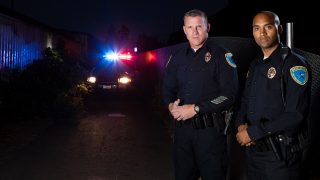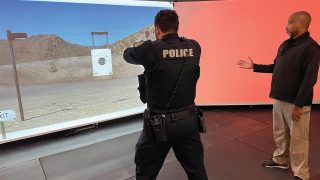
I firmly support the U.S. Supreme Court’s objective reasonableness test regarding a legal assessment of a use-of-force event. This article aims to bring awareness to research regarding the public’s emotional perception when an officer uses force. When instructors have a better understanding of this perception, it may help with training development. Teaching the legal use-of-force standard is a must. But that is only foundational. Integrating the emotional perception within your training is a pathway to professionalism. This can be accomplished by training in proper de-escalation tactics. Below are four of my takeaways from peer-reviewed studies suggesting certain tactics may influence the moral or ethical acceptance of an officer’s use of force. I encourage you to read for yourself and draw your own conclusions.
- Civilians who witness police use of force apply a moral schema to the event. This judgment is not the same as the “objective reasonableness” test used by the legal system. This moral weighing of right or wrong does not necessarily consider the severity of the force used. Training tactics that only address the legal aspects of a force event are no longer sufficient.
- When making moral judgments of right and wrong, humans quickly identify the parties involved as either an aggressor or a receiver of that aggression. Once this label has been applied, it is difficult to view the aggressor as a victim and vice versa. When an officer is labeled as the aggressor, it is difficult to emotionally accept the force as necessary.
- When making moral judgments of right and wrong, humans place weight on whether or not an individual appeared to cause the event. Someone who causes or incites an event is more likely to be considered an aggressor. When officers’ compress the event for non-articulated reasons, they may be perceived as the reason the force occurred. This is sometimes referred to as officer-created jeopardy.
- Civilians are more likely to perceive a male officer’s use of force as excessive because of implicit bias. We tend to associate men’s aggressiveness with a lack of emotional control. When officers appear to use force while unable to regulate their emotions, the force is more likely viewed as unreasonable, even when legal.
The actions taken by the officer prior to force have more emotional influence than the force itself. De-escalation tactics should include creating time or slowing the event down, allowing time for the person to vent. By forcing verbal or physical compliance right out of the gate, we encourage a perception of officer aggression. Thus, our subsequent choices appear less moral. True de-escalation tactics help foster the perception an officer was neither compressing nor escalating the event. In other words, seek to demonstrate that we responded to the person, not simply reacted.
Even when our actions are legal, they can be morally hard to stomach — hence the saying, “lawful but awful.”
When officers arrive at the scene and do not take the time to listen or allow others to vent, and then a force event occurs, we unknowingly encourage the perception the receiver of that force was a victim — even if the law allows the force option to be used. Proper de-escalation includes active listening, offering options and emotional labeling. This supports the perception of the officer having high emotional intelligence and control. Male officers benefit the most since these strategies can help them be perceived as non-aggressive and calm. Force accompanied by anger is often viewed as morally wrong, even if legally right. Attempts to de-escalate show the officer only resorted to force based on a degree of danger, not his emotions. Remember, de-escalation is not an officer screaming or giving commands within a broken sentence structure. Proper de-escalation training includes alpha commands and crisis communication.
Consider officers dealing with a person armed with a baseball bat acting bizarrely with no one nearby. He or she may not need to be met with deadly force just seconds after police arrive. Yes, this could be a serious threat. Yes, they may have no intention of complying. Yes, they may even take a step toward the officer. But if there is an opportunity to use de-escalation tactics, which is not screaming, “Drop the bat!” it is best to take it. Such a tactic may mean creating time through proper body spacing before using force. This can influence the moral perception of the force once it occurs. Logically, we all know the person with the bat is the aggressor. Nevertheless, a failure to use de-escalation tactics makes it easier to perceive the officer as an aggressor.
With that said, even if an officer feels de-escalation will not work, he or she should still engage in it. Even if briefly done, it may show proof through tangible actions. Such actions help support the perception officers were trying not to be the initiators of force. The research suggests once a person has mentally labeled an officer as a non-aggressor, their actions are more likely to be judged as morally right. If we perceive a person as the receiver of initiated aggressive force, we are more likely to identify that person as a victim. Thus, they are undeserving of the force. True de-escalation tactics empower an officer to show he or she was sincere in their efforts to avoid force — even if such force was unavoidable and legal.
Deploying de-escalation tactics is not always possible, and it will not always help avoid a use-of-force event. When it can be safely utilized, no matter what the outcome, de-escalation helps the public accept the officer’s actions as moral. Our goal, even when unattainable, should be to train officers on how best to deploy force both legally and morally acceptable. Look at your training and ask yourself, “Is my training teaching officers how to listen, allow others to vent and increase self-emotional control, concepts of proxemics and methods to emotionally respond instead of reacting to a person’s actions?”
From the research, it appears proper de-escalation tactics should be teaching such topics. But don’t take my word for it — read the studies for yourself and come to your own opinion.
As seen in the August 2022 issue of American Police Beat magazine.
Don’t miss out on another issue today! Click below:





